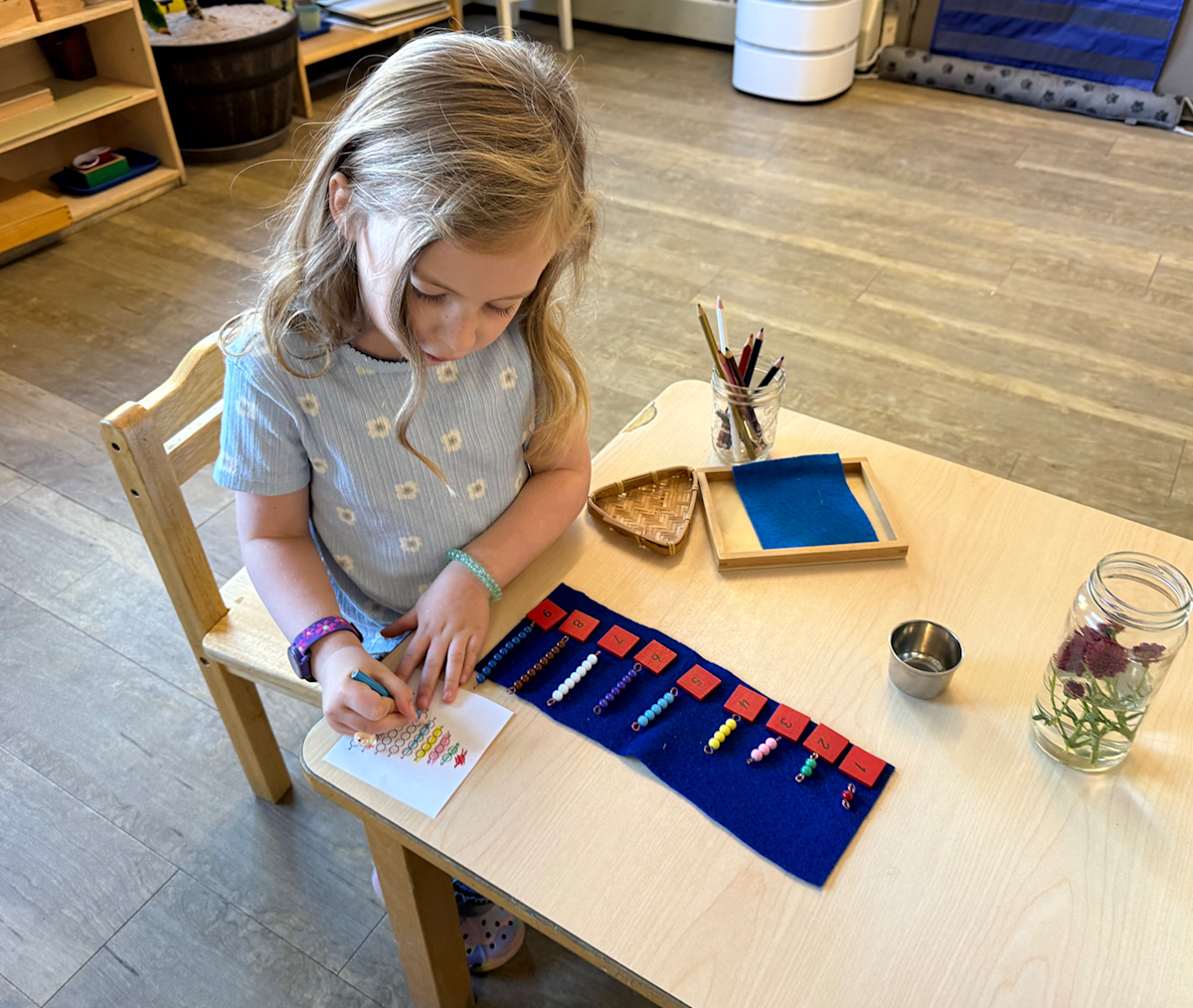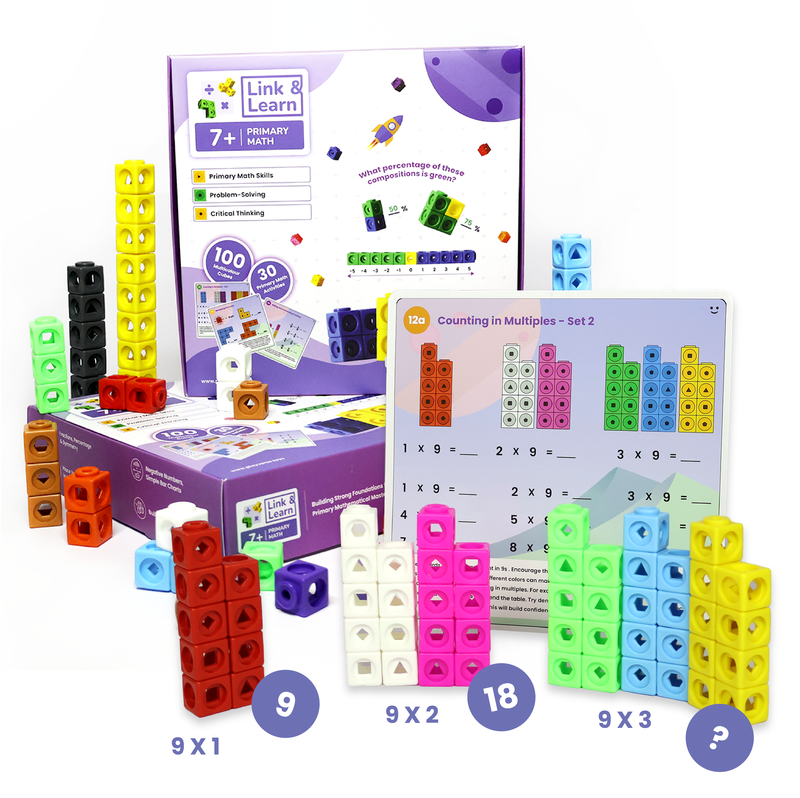Using visual aids to simplify struggles in primary math for young learners
Wiki Article
Proven Methods to Streamline Complicated Mathematics Topics for Better Understanding
Complex mathematics subjects frequently existing significant challenges for learners. Numerous tested approaches can assist in understanding. These approaches consist of using visual aids, damaging down problems, and attaching ideas to real-world situations. Each strategy serves to enhance understanding and retention. The effectiveness of these strategies raises essential concerns about their implementation in instructional settings and their influence on student engagement. What certain approaches could be most valuable in practice?Comprehend the Foundations
Understanding the foundations of mathematical concepts is essential for fostering much deeper comprehension. A solid understanding of fundamental principles permits students to build on their understanding, developing a much more systematic understanding of advanced topics. This fundamental expertise includes important math operations, number theory, and the homes of different mathematical functions. By making sure that trainees are comfortable with these foundation, instructors help to avoid complication and disappointment as they experience much more complicated ideas.Furthermore, a concentrate on fundamental understanding motivates important reasoning and analytic abilities. They can approach difficult issues with self-confidence when trainees recognize the connections in between different ideas. This tactical emphasis not just boosts retention yet additionally advertises a mindset tailored in the direction of expedition and inquiry. Inevitably, prioritizing foundational knowledge furnishes students with the devices essential to navigate the complexities of mathematics, leading the way for success in both academic and real-world applications.

Use Visual Aids and Diagrams
Aesthetic aids and diagrams act as effective devices in streamlining complex mathematical topics. They promote comprehending by providing visual depictions of abstract principles, making them a lot more concrete. Charts can illustrate features' habits, while geometric layouts can make clear spatial connections in issues involving shapes and angles.Flowcharts and concept maps can damage down intricate procedures, leading learners through multi-step options aesthetically. This strategy not just improves comprehension however additionally engages various understanding styles, particularly visual learners who may battle with verbal descriptions alone.

Break Down Troubles Into Smaller Steps
Damaging down troubles right into smaller sized, convenient actions can substantially enhance understanding in maths. This method enables students to concentrate on one component of a trouble at a time, minimizing feelings of bewilder and confusion. By isolating each step, trainees can establish a more clear understanding of the underlying concepts and approaches required to get to a solution.For example, when fixing an algebraic formula, one can start by simplifying each term before using operations. This organized malfunction not only clears up the procedure yet also allows students to identify errors more conveniently.
Additionally, this method encourages critical reasoning, as students are motivated to evaluate each step's significance to the total issue. Ultimately, damaging down issues cultivates a much more systematic method to mathematics, promoting a deeper understanding and retention of material. By mastering smaller sized steps, students develop self-confidence and skill that add to their success in extra complex mathematical difficulties.
Incorporate Real-World Examples
Incorporating real-world examples right into math direction can greatly boost trainee interaction and comprehension. When students link mathematical principles to day-to-day life, they usually locate the material extra relatable and less complicated to grasp. For example, making use of budgeting circumstances to educate enhancement and subtraction helps trainees recognize the useful applications of these operations. Similarly, using sporting activities statistics can properly demonstrate ideas in chance and averages, making the finding out experience extra pleasurable and appropriate.Educators can additionally incorporate real-life data, such as populace development or ecological data, to highlight charts and functions. This technique not only clears up abstract ideas however likewise cultivates essential assuming as trainees assess and analyze genuine information (struggles in primary math). By connecting the space between concept and method, pupils are most likely to appreciate the value of maths in their day-to-days live, causing boosted retention and application of mathematical principles
Urge Collaborative Discovering
Collaborative learning acts as a powerful tool in simplifying complex mathematics ideas. By engaging in team issue solving, trainees can share diverse point of views and methods, boosting their understanding. In addition, peer mentor methods and interactive study sessions promote a helpful setting, enabling learners to understand difficult product better.Group Trouble Solving
Group trouble solving promotes an environment where pupils can actively involve with complex mathematics ideas with team effort. By interacting, pupils can share diverse viewpoints and techniques, enhancing their understanding of mathematical concepts. Collaborative efforts encourage conversation, enabling people to verbalize their reasoning and make clear mistaken beliefs. This interaction advertises essential reasoning and much deeper comprehension of tough subjects. Furthermore, team trouble solving can lower stress and anxiety associated with difficult math problems, as pupils sustain each various other in conquering challenges. Educators can assist in these sessions by appointing different duties within groups, ensuring each trainee finds out and adds from the procedure. Eventually, this collective technique not only improves understanding but additionally develops necessary interaction and synergy abilities crucial for future academic and professional ventures.Peer Training Techniques
Building on the benefits of team issue addressing, peer training techniques emerge as a powerful method to better improve collaborative discovering. These strategies include trainees discussing ideas to each other, which reinforces their understanding and develops self-confidence. They articulate their believed procedures and clarify their very own misconceptions when students take on the duty of educator. This reciprocatory exchange promotes a helpful environment where students feel more comfy looking for and asking questions assistance. Furthermore, peer training urges involvement, as trainees commonly relate better to their peers than to standard direction. By integrating these approaches right into the understanding process, instructors can create a vibrant class atmosphere that promotes deeper understanding and retention of complex mathematical subjects.Interactive Research Procedure
Interactive study sessions can substantially boost the knowing experience by promoting a setting where trainees proactively involve with each other. These collaborative setups motivate individuals to share varied perspectives, thus deepening their understanding of complex mathematics topics. Students can damage down elaborate ideas into manageable parts, facilitating more clear comprehension. Via seminar, students can clarify doubts and strengthen their expertise by showing peers, which strengthens their grasp of the material. Furthermore, interactive sessions promote inspiration and responsibility, as students feel extra devoted to their studies when functioning together with others. Integrating tools such as analytic games or collaborative platforms can further enhance these visit this website sessions, making learning both enjoyable and efficient. Generally, interactive research sessions function as a powerful strategy for boosting mathematical understanding.Make Use Of Technology and Online Resources
As trainees browse with complicated mathematics topics, leveraging innovation and on the internet sources can greatly enhance their understanding. Educational systems such as Khan Academy and Coursera offer video clip tutorials that damage down intricate ideas right into absorbable sectors. These resources commonly integrate interactive aspects, permitting trainees to exercise troubles in genuine time, obtain prompt responses, and track their progress.Additionally, math-specific apps like Photomath and Desmos offer tools to imagine charts and formulas, fostering a much deeper theoretical understanding. On-line forums, such as Heap Exchange, allow students to position questions and involve with an area of specialists and students, further clearing up hard topics.
Exercise Regularly and Review Constantly
Regular technique and normal review are vital for mastering complex math topics. Engaging with mathematical ideas each day reinforces understanding and aids to recognize areas that need additional focus. By resolving issues repetitively, learners can deepen their grasp of theses and procedures, making them second nature over time.Integrating an organized review schedule allows individuals to review formerly found out product, making certain retention and clearness - struggles in primary math. This approach not just aids in memory consolidation but likewise highlights connections between various mathematical concepts, fostering a much more holistic understanding
In addition, setting specific objectives for both practice and evaluation can improve emphasis and inspiration. Allocating time each week for targeted analyses and workouts can generate considerable benefits. Inevitably, normal practice and constant testimonial create the backbone of successful mathematics education, gearing up learners with the self-confidence and abilities needed to take on increasingly complicated topics.
Often Asked Questions
Just How Can I Keep Motivated While Understanding Complicated Mathematics Topics?
Staying encouraged while finding out intricate math topics involves setting possible objectives, commemorating small successes, seeking support from peers, using varied sources, and preserving a positive way of thinking to welcome obstacles as chances for growth and understanding.What Are Common Mistakes to Stay Clear Of in Mathematics Understanding?
Typical errors in mathematics comprehension include ignoring foundational principles, hurrying through issues, failing to practice consistently, and misconception terms (struggles in primary math). Additionally, over-reliance on memorization as opposed to grasping underlying principles can impede real understanding and applicationJust how Do I Examine My Understanding of Math Concepts?
To analyze understanding of math ideas, one Visit Your URL should regularly exercise problems, seek comments, participate in conversations, and make use of self-quizzes. Reviewing errors and teaching concepts to others can further enhance understanding and retention of product.What Should I Do if I Feel Overloaded by Mathematics?
When really feeling overwhelmed by math, one must take breaks, practice mindfulness, and break problems into smaller components. Seeking aid from teachers or peers can also provide clearness and reduce stress and anxiety associated with difficult principles.How Can I Locate a Math Tutor or Study Hall?
To locate a math tutor or study team, one can browse on the internet platforms, regional community boards, or schools. Connecting with peers and looking for recommendations can likewise bring about effective coaching options and study partnerships.When students recognize the partnerships in between various ideas, they can approach difficult problems with confidence. Group problem addressing cultivates a setting where pupils can actively involve with complicated mathematics ideas with teamwork. Furthermore, team trouble fixing can lower stress and anxiety connected with tough mathematics troubles, as trainees support each other in overcoming barriers. These methods involve pupils clarifying ideas to one an additional, which enhances their understanding and builds self-confidence. Students can damage her response down elaborate principles right into workable parts, promoting more clear understanding.
Report this wiki page